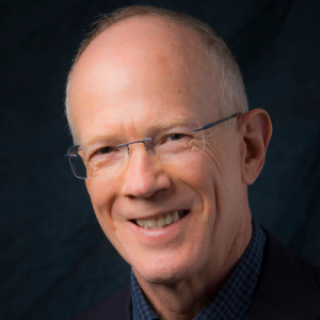Reaching Every Child: A Call for Inclusive Early Education Policies
November 3, 2023
A perennial concern in early childhood policy is that public policies favor some providers over others in competition for a limited number of preschoolers. Public programs are said to crowd out private, causing child care centers to go out of business. Public schools squeeze out Head Start. We expect these concerns have intensified and will continue to do so for three often unrecognized reasons.
Birth rates have been falling and will continue to decline. The number of 3- and 4-year-olds fell from 8.85 million in 2010 to 7.58 million in 2022. (In the next two years, this drop will be exacerbated by the sharp drop in births during the pandemic, but this is a temporary notch.)
As NIEER’s national parent survey found, enrollment rates for children in low-income families continued to lag pre-pandemic levels even as others returned to pre-pandemic rates.
Child poverty rates fell substantially. Even without the child tax credit boost, a booming economy and low unemployment are likely to continue to reduce poverty rates. As most public funding for preschool and childcare is targeted, the eligible population for Head Start, child care subsidies, and many state-funded preschool programs is reduced.
As the eligible population seeking enrollment shrinks for all these reasons, we expect to see calls to set quotas or require children to attend specific programs. That would be a mistake. Despite the trends cited above, there is no shortage of young children who are unserved, especially those in poverty, nor will there be any time soon, unfortunately. Our country has never had even half of the children in poverty enrolled in preschool classrooms. Yes, there has been a shift toward public enrollment, but that misses the more important point. Huge numbers of children remain unserved in any classroom. In 2022, 47% of all 3- and 4-year-olds were unserved, and a whopping 57% of children in households with annual incomes under $20,000 were unserved. The United States has a huge preschool enrollment problem. That problem is not allocating the each to reach but reaching the many who have never been enrolled.
Of course, the extent of the enrollment problem varies by state. In Washington DC and the small number of states with universal preschool programs, few 4-year-olds may be left unserved, though even in some of these there are thousands unserved. But this is not the case for 3-year-olds in any state. Even the states with the highest enrollment rates have 30 percent or more unserved in private or public programs at age 3.
Given the facts, we as a field should focus on how we can reach all children beginning at age 3, especially those in the lowest income families. Rather than trying to ensure providers a guaranteed market share, we need to find policies that support and incentivize providers to reach the unserved—starting with those in greatest need. Publicly funded mixed-delivery systems that include private child care centers, Head Start, and the public schools offer our most cost-effective, fastest route to accomplishing this goal. This approach maximizes the use of existing resources—human, physical, and financial—and can provide adequate levels of funding to support the quality that makes programs highly effective. However, we must change how these programs work and work together. If, after more than a half-century of targeted programs, we don’t reach most children in poverty, we must be doing some things wrong.
Our efforts are better spent looking at expanding publicly funded access in mixed settings, strategies that can help families locate publicly funded seats in their communities and allow families to access programs that best fit their family needs. Some of those strategies include coordinated enrollment systems, simplified application processes, marketing that reaches eligible families, and data collection. The below real-life experience illustrates the need for publicly funded programs.
One of us (Tracy Jost) owned and operated an early learning center for 15 years. As an owner, the fear of losing my four-year-olds to an expanded State preschool system was worrisome. The team worked hard to elevate the quality of our program, and we applied and were awarded a preschool expansion grant. We started small, asking only to fill 10 eligible placements.
The first year of recruitment, eligible parents seemed skeptical—was it really free? At the time, our county did not have coordinated enrollment, so finding eligible families became the responsibility of the program. Social media offered free advertising by posting on community Facebook pages, flyers were printed in-house and hung in laundromats, and restaurant community boards. We reached out to other local small businesses and asked them to share with their employees if they thought they qualified. Information was shared with our local Department of Social Services, food banks, and churches. As a result, all eligible placements were filled by the end of September. At the same time, we provided high-quality pre-k funded by the State, we also continued to serve tuition-paying students. In total, we had two four-year-old pre-k classrooms operating that served a combined total of 36 children (ten of which were being paid for by the State).
The second year, our eligible families that attended the first year helped to spread the word, and families came to us to apply. We still did our recruitment efforts, but we filled all 10 placements within two weeks and had a waiting list for 5 more students. We asked the state if additional funds were available and received permission to enroll 5 more eligible students. We were still serving 36 pre-k students, but now 15 of them were paid for by the state. Additionally, the pre-k grant paid for a degreed teacher and a teacher assistant, curriculum and assessment systems, new classroom furnishings and materials, professional development training, and covered educational activities and field trips for the qualifying students. State funding for those expenses freed up some funds in our budget to help increase wages/bonuses for the rest of the staff. This was a win for the children in our community, a benefit to families that could once not afford it, and a help acknowledging hard-working staff.
My fear of losing my four-year-olds was now replaced with the hope of a program that was benefiting so many in our community. When the state expanded to allow three-year-olds to be served, enrollment continued to expand. This all happened in a county with the second highest median income in the State with public pre-k programs already operating in public schools and Head Start programs. Public funding did not detract from my program, it enhanced it.
We encourage others in the field to join in the conversation about how to reach all children beginning with those most in need. What are your thoughts? What policies make it difficult to enroll and recruit and how can those policies be fixed?
The Authors
W. Steven (Steve) Barnett is a Board of Governors Professor and the founder and Senior Co-Director of the National Institute for Early Education Research (NIEER) at Rutgers University. Dr. Barnett’s work primarily focuses on public policies regarding early childhood education, child care, and child development.
About NIEER
The National Institute for Early Education Research (NIEER) at the Graduate School of Education, Rutgers University, New Brunswick, NJ, conducts and disseminates independent research and analysis to inform early childhood education policy.

